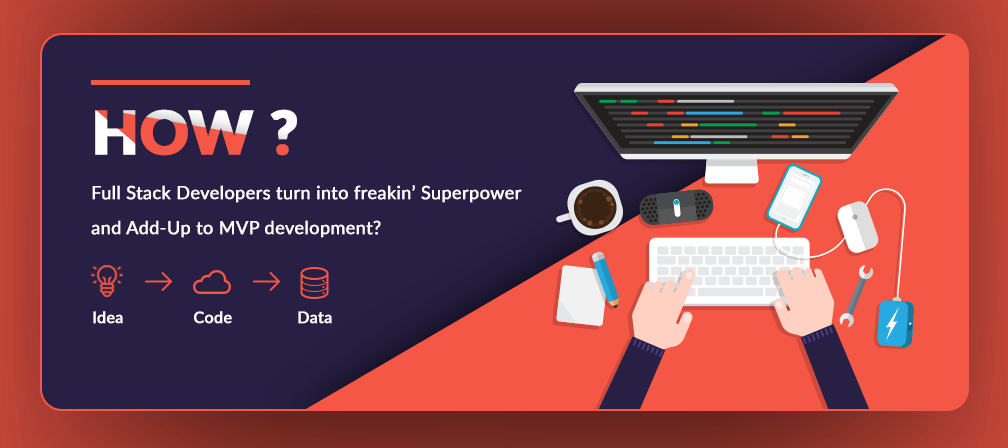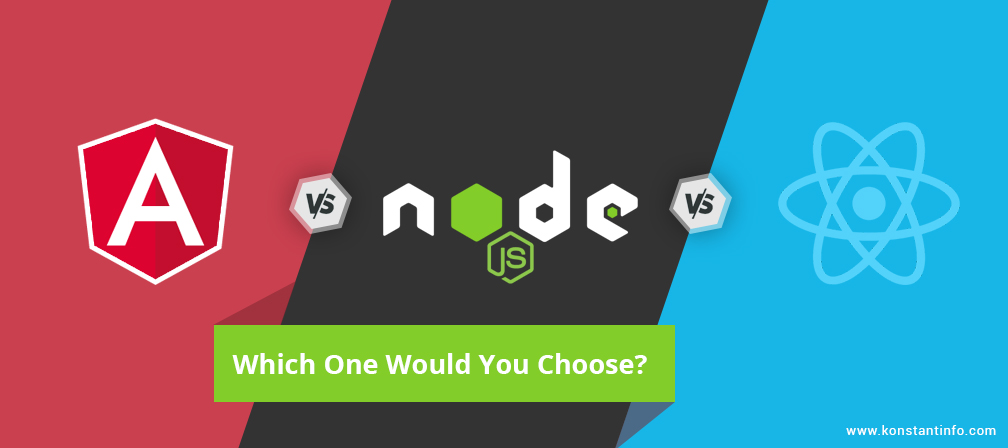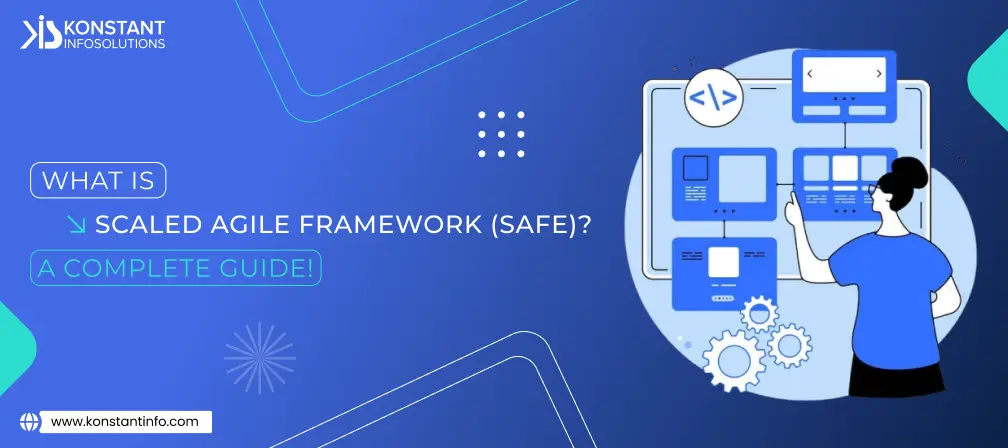
An MVP is usually developed at the beginning of project development (planning phase). In one line, MVP is a minimum viable product that can be termed as a sketch, an outline or a blueprint of the actual product (to entice early adopters), is made to pass all the stages till deployment just to see if it has potential to succeed. It saves time and cost and can be considered as a most reasonable tool to determine a product’s potential. Most common use cases of MVP method are Mobile apps and websites.
Discussing the necessity of an MVP in some more detail:
Full Stack Developers are pro at managing and balancing all stages of a project right from initiation of the idea, planning, analyzing, designing, development/coding, testing, maintenance, deployment, and post-deployment support. They can aptly be referred to as Jack of all trades, but a lot of time management is involved in addition to client-handling and adapting to time-zones. Notwithstanding the fact that adapting to technology changes or modifying the application module according to an urgent need all go hand in hand.
After-all full stack developers are a quick-pick with startups and mid-level enterprises, who ultimately rack-up to save more money (in terms of hiring manpower – project manager, the front-end and the back-end app developers, the UI and the UX designers, test engineers and peripheral devices), time (required in training, meetings and sessions) and efforts (in adjusting to time-zones, creating prototypes – mockups and wireframes, converting them into designs, coding and integrating the modules, unit testing, followed by regression, integration and system test, smoke testing the entire application and moving on to user acceptance testing just before deployment).
Full Stack Development as a term evolved as a full stack engineer matured. For some people, it is like building an n-tier application from scratch, presentation layer, logic layer, and data layer. For others it goes beyond, many more intermediate layers are involved but they are just a variation of this simple theme.
Full stack developers need to be skilled at GIT and HTTP/REST API’s and must essentially be aware of cloud computing solutions like AWS, Digital Ocean and Heroku etc.
A full stack developer is undoubtedly the best fit for small to medium size enterprises and startups who are concerned about saving cost initially. A gist of advantages that follow:
An MVP is developed with a limited budget and is basically created to attract early adopters without including every detailed feature. It reduces any trace of risk that a business might have, permeates a product to easily enter the market, makes it famous amongst clients even before it is released, is helpful in gaining opinions of target users, and demand less investment.
If you have started looking for the best people around to create an MVP, it can be well understood that there is a huge variation in the prices that they quote. If half of a product is built and given to target audience for a sneak peek, that is not an MVP. A prototype and an MVP are both created to test a hypothesis. But a hypothesis will only be helpful in fetching a feedback while an MVP is useful in engaging user at first instance, collecting useful data and making him trust in the prospective product.
Normally, the cost of MVP development in the US revolves around $20,000 to $30,000 (depending upon the scope of the work). Design, functionality, and other voice transitions and customizations like navigations, effects, buttons etc.
As a generic example, if an app costs $24,000 and is estimated to be developed in 6 months, a better alternative is to create an MVP in $1600 within 1-2 months and test it.
Cost bifurcation:
| Time | Cost | |
| Wireframe | 16-20 Hours | $400 |
| Design and Development | 40 hours | $1200 |
Full stack developers are a sort of hyper accumulators. You can notice a change in their work assignments with the need of the hour. They are incinerated while they try to win over an idea into a viable product. Every product that is into existence today has been a creative thought a few years back. And this would have not been made possible without people who had the confidence to share new concepts and finally convert the ideas into actions.
With ever-increasing competition, startups have to proactively come up with the products in the market more than enterprises need to. Having a minimum viable product / MVP can be a great way of doing it. MVP is a product with just a basic set of features enough to capture the attention of early adopters. Developers need to establish that they are able to provide just the right key features that differentiate and give value to customers to attract clients and investors before the market moves to the next stage and embraces their counterparts. Some terms that resemble and sound closer:
MVP – Minimum Viable Product
Created to explore the hypothesis
MMR – Minimum Marketplace Release
MMF – Minimal Marketable Feature
MMP – Minimal Marketplace product



Neeti Kotia is a technology journalist who seeks to analyze the advancements and developments in technology that affect our everyday lives. Her articles primarily focus upon the business, social, cultural, and entertainment side of the technology sector.
Or send us an email at: [email protected]